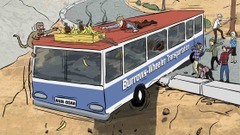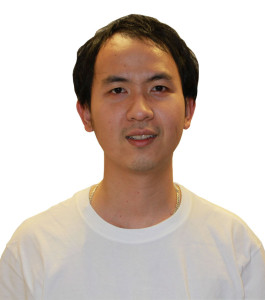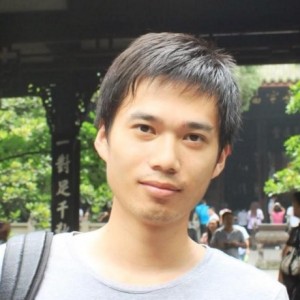
A Review of "Bioinformatics Algorithms - An Active Learning Approach" by Compeau and Pevzner
We are honored to receive a complimentary copy of the new book by Phillip Compaeu and his mentor Pavel Pevzner. The book has beauty written all over it. Not only the text is masterfully composed, but the biological insights, illustrations, color-coded links to Rosalind, etc. all point to extensive care and thinking that went into design of the book. Moreover, it comes with a few unexpected bonuses as described later.
Seven Well-written Chapters
Seven, the number of chapters in the book, is not randomly picked, but has deeper significance to the authors. Both authors are (were) members of a special group currently going extinct in the USA. More on that later along with the story of their sacred city, but let us discuss the book first.
Each chapter attempts to answer a biological/bioinformatics question, but also has multiple sub-themes for students from different backgrounds. The chapters are so elegantly planned that readers from different backgrounds will go through them and will end up learning completely different topics in increasing order of complexity. For example, a reader with biology background learns about different aspects of algorithm design with the first chapter providing introduction to algorithmic approach, second chapter explaining brute force algorithms and the following chapters discussing (iii) randomized (probabilistic) algorithms, (iv) graph algorithms, (v) dynamic programming, (vi) combinatorial algorithms and (vii) combinatorial pattern matching. A reader with computer science background will get familiar with genetics in proper order through the chapters, with first chapter introducing him to DNA double strands, second chapter discussing genetic code and so on.
In many ways, the text reminds us of Feynman’s Lectures of Physics. One major similarity is that even though it presents complex topics in very simple language, the book is not useful only for novices. Experts will also feel that they learned new things or new ways of thinking about topics they had been familiar with.
To MOOC or Not to MOOC That is NOT the Question
This book is one component of MOOC/Active Learning strategy of Pevzner and his team, with Rosalind and Pevzner’s Coursera lectures being the other two. In blogosphere and elsewhere, we see plenty of discussions about MOOC vs traditional classroom lectures (for example check “Bessels correction and the dangers of MOOCs” in Lior Pachter’s blog), but we find them battling a false dichotomy. The real question is whether one can utilize the internet/electronic technology to come up with a greatly improved way of teaching compared to what classroom lectures provide. When you view MOOCs in that way, you will find that Pevzner and his team presented a thoughtful approach to utilize the new technology.
To remind the readers that this book is strengthened by other components of MOOC, each section has links to relevant Rosalind questions. Also, the STOP and THINK pauses in the book are possibly linked to similar pauses in the Coursera lecture, where Pevzner allows students to reflect on the previous topic before moving on to the next one.
Correction from Compeau on above paragraph:
This is not necessarily true. It’s true in some places, but the idea was for these questions to keep students at the right pace by constantly asking them probing questions, as if we were having a Socratic conversation with them.
We should also mention that not only the book is written to aid the students taking Pevzner’s online class, its writing benefited from those students. Compeau pointed out that they listened to comments from 3,000 students in the online class discussing the materials in the Coursera mailing list and incorporated them into revising the text. So, you can see a beautiful ‘massively online’ positive feedback going on here.
Bonus 1 - Beautiful Pictures

Each of the seven chapters starts with a beautiful cartoon picture showing Pevzner and Compeau solving problems in some kind of wild setting. They were drawn by Randall Christopher, a very talented artist based in San Diego, who also worked with Pevzner for his previous book. Here is his website. Even the design of those pictures show plenty of thinking going behind them. For example, in chapter 7, a monkey and Pevzner are rushing to get to a cart of bananas from the roof of a bus about to go off the cliff, while Compeau is barely holding the bus through a rope tied to a tree. Speed is very critical in recovering the bananas and in the subject matter of the chapter as well. The number plate of the bus is ANN-B$AA. Can you guess what its inverse BWT is?
Another aspect of those pictures is to utilize some cultural image the students are already familiar with so that they can better relate to the chapter. For example, the mentioned image on the cover of chapter 7 is inspired by cliffhanging scene in “The Italian Job” that is used more recently in -
Apart from those cover images for each chapter, you find plenty of illustrations inside the book to properly explain the algorithms. Even the use of color throughout the book has been elegantly done.
Bonus 2 History Lessons
The second bonus of the book is history lessons from Pevzner. Most mathematicians we came across were interested in history and especially in the origin of discoveries in mathematics, because that gave them interesting perspectives into development of human thinking over the centuries. Pevzner and Compeau are no exceptions. The real bonus here is to learn about Soviet and Russian history from Pevzner, because that part does not often get discussed in US-centric books. As an example, he explained in a superb way why Stalin prize was more important than the Nobel prize. Sure the Nobel prizes made many scientists famous, but Stalin prize gave a Russian geneticist ‘relief from Stalin’s purge’ card and saved his life from Beria. What Pevzner did not mention (for space reason) was that Stalin himself did not have Stalin prize and died from Beria’s poisoning, and Beria died in the hand of Khrushchev soon after. What a nightmare !
Modern Russians do not want to claim of ownership any of those criminals and Pevzner is no exception. In all history sections, he made proper distinction between ‘Soviet’ and ‘Russian’. For example, the Kalinin was properly described as a Soviet revolutionary, but the scientists positively contributing society were correctly referred to as Russian scientists.
Importance of the Number Seven
That brings us to the number seven, which is part of another beautiful history lesson in the book. See whether the following picture makes any sense to you, and if not, you are definitely not part of the special group going extinct in USA (namely the ‘mathematicians’).

The above image shows the seven bridges of Knigsberg, which, in the context of this book, is associated with the earliest graph theory problem solved by any mathematician ever. That mathematician happens to be Euler, the most prolific mathematician of the modern era. Moreover, Knigsberg, a Prussian city, was very important in the history of modern science and philosophy. Immanuel Kant spent his entire life there and David Hilbert was born as well. The city does not exist any more and that aspect of history is well covered in the book. During WW II, it got destroyed by US/UK bombing and then Stalin’s army chased all Germans out. Most scholars fled to Gttingen, the university of Gauss and the depopulated city was taken over by the Soviets. It exists under a new name - Kaliningrad - and has an odd position in the map with respect to Russian territories.
References
The references in the book are meticulously done, and as an unexpected bonus, Phillip Compeau cited a mathematics paper by Bill Gates, when he was undergraduate student at Harvard. In fact, Compeau is extending the ideas in that paper for his PhD research on pancake flipping :)
The Development Team
Apart from Pevzner and Compeau, the book has a highly skilled development team consisting og Olga Botvinnik, Son Pham, Nikolay Vyahhi and Kai Zhang.


Here you see Vyahhi’s Stepic (where the book was hosted for the course) being described as Russia’s hottest startup.


Publisher
Even in choosing publisher, Compeau and Pevzner went out of traditional route and picked Active Learning Publishers LLC, a new publishing house for books emphasizing active learning approach. We could not find their website and the only way to contact the company is through the website of this book.
Summary
In summary, “Bioinformatics Algorithms An Active Learning Approach” is a well- written and elegantly designed book that we like to read many times.